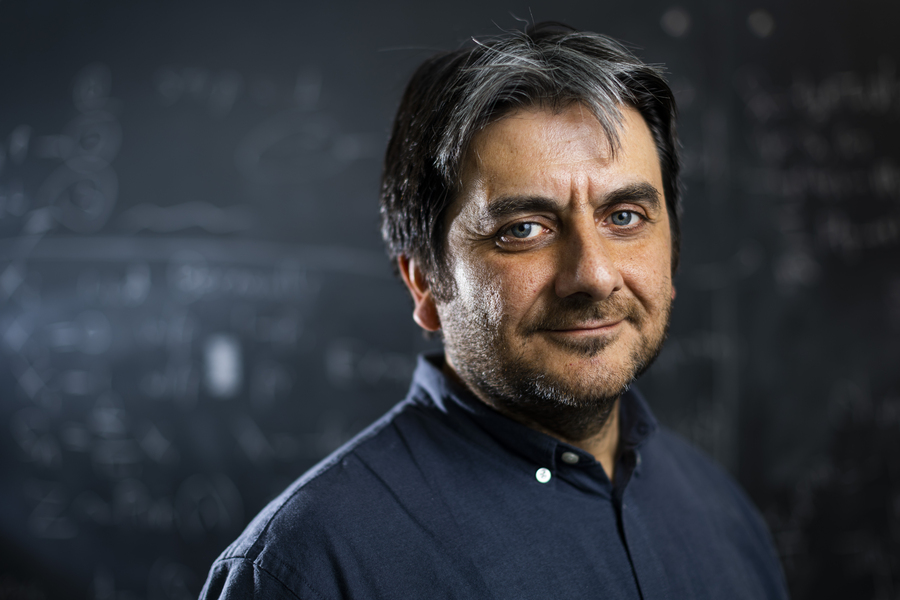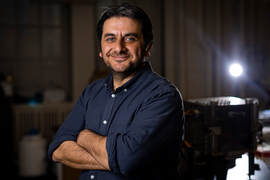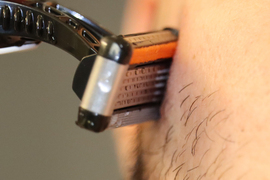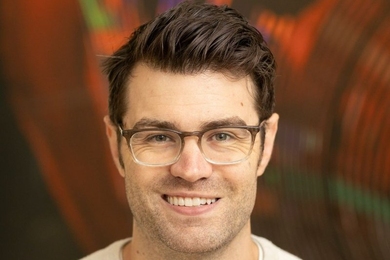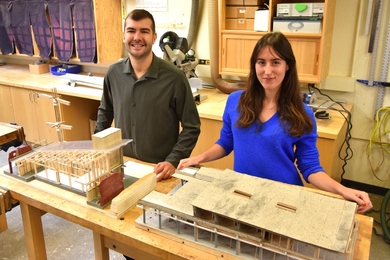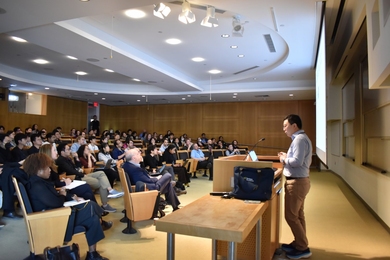C. Cem Tasan has been appointed director of MIT’s Materials Research Laboratory (MRL), effective March 15. The POSCO Associate Professor of Metallurgy in the Department of Materials Science and Engineering (DMSE), Tasan succeeds Lionel “Kim” Kimerling, who has held the post of interim director since Carl Thompson stepped down in August 2023.
“MRL is a strategic asset for MIT, and Cem has a clear vision to build upon the lab’s engagement with materials researchers across the breadth of the Institute as well as with external collaborators and sponsors,” wrote Vice President for Research Ian Waitz, in a letter announcing the appointment.
The MRL is a leading interdisciplinary center dedicated to materials science and engineering. As a hub for innovation, the MRL unites researchers across disciplines, fosters industry and government partnerships, and drives advancements that shape the future of technology. Through groundbreaking research, the MRL supports MIT’s mission to advance science and technology for the benefit of society, enabling discoveries that have a lasting impact across industries and everyday life.
“MRL has a position at the core of materials research activities across departments at MIT,” Tasan says. “It can only grow from where it is, right in the heart of the Institute’s innovative hub.”
As director, Tasan will lead MRL’s research mission, with a view to strengthening internal collaboration and building upon the interdisciplinary laboratory’s long history of industry engagement. He will also take on responsibility for the management of Building 13, the Vannevar Bush Building, which houses key research facilities and labs.
“MRL is in very good hands with Cem Tasan’s leadership,” says Kimerling, the outgoing interim director. “His vision for a united MIT materials community whose success is stimulated by the convergence of basic science and engineering solutions provides the nutrition for MIT’s creative relevance to society. His collegial nature, motivating energy, and patient approach will make it happen.”
Tasan is a metallurgist with expertise in the fracture in metals and the design of damage-resistant alloys. Among other advances, his lab has demonstrated a multiscale means of designing high-strength/high-ductility titanium alloys; and explained the stress intensification mechanism by which human hair damages hard steel razors, pointing the way to stronger and longer-lasting blades.
“We need better materials that operate in more and more extreme conditions, for almost all of our critical industries and applications,” says Tasan. “Materials research in MRL identifies interdisciplinary pathways to address this important challenge.”
He studied in Turkey and the Netherlands, earning his PhD at Eindhoven University of Technology before spending several years leading a research group at the Max Planck Institute for Sustainable Materials in Germany. He joined the MIT faculty in 2016 and earned tenure in 2022.
“Cem has led one of the major collaborative research teams at MRL, and he expects to continue developing a strong community among the MIT materials research faculty,” wrote Waitz in his letter on March 14.
The MRL was established in 2017 through the merger of the MIT Materials Processing Center (MPC) and the Center for Materials Science and Engineering. This unification aimed to strengthen MIT’s leadership in materials research by fostering interdisciplinary collaboration and advancing breakthroughs in areas such as energy conversion, quantum materials, and materials sustainability.
From 2008 to 2017, Thompson, the Stavros Salapatas Professor of Materials Science and Engineering, served as director of the MPC. During his tenure, he played a crucial role in expanding materials research and building partnerships with industry, government agencies, and academic institutions. With the formation of the MRL in 2017, Thompson was appointed its inaugural director, guiding the new laboratory to prominence as a hub for cutting-edge materials science. He stepped down from this role in August 2023.
At that time, Kimerling stepped in to serve as interim director of MRL. He brought special knowledge of the lab’s history, having served as director of the MPC from 1993 to 2008, transforming it into a key industry-academic interface. Under his leadership, the MPC became a crucial gateway for industry partners to collaborate with MIT faculty across materials-related disciplines, bridging fundamental research with industrial applications. His vision helped drive technological innovation and economic development by aligning academic expertise with industry needs. As interim director of MRL these past 18 months, Kimerling has ensured continuity in leadership.
“I’m delighted that Cem will be the next MRL director,” says Thompson. “He’s a great fit. He has been affiliated with MPC, and then MRL, since the beginning of his faculty career at MIT. He’s also played a key role in leading a renaissance in physical metallurgy at MIT and has many close ties to industry.”
